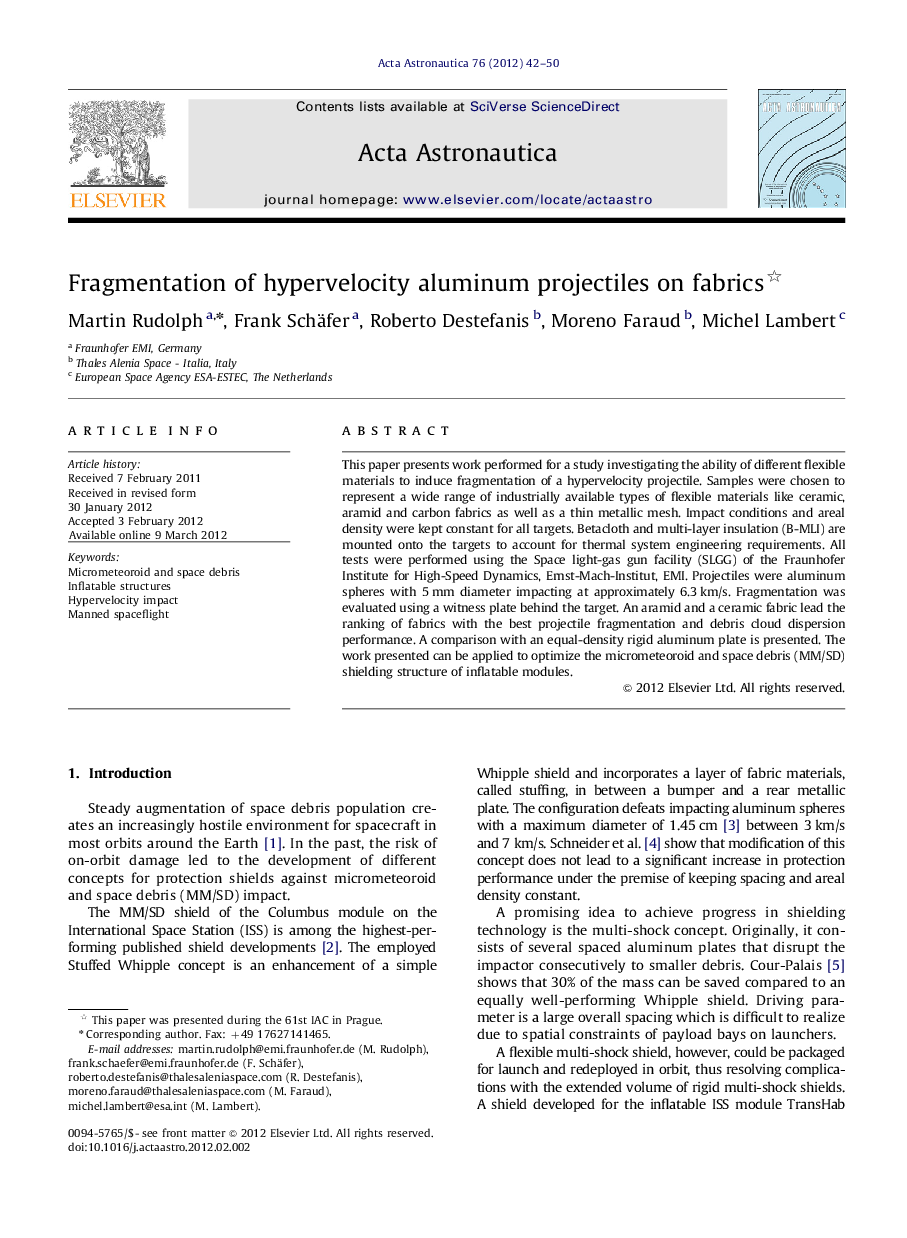| کد مقاله | کد نشریه | سال انتشار | مقاله انگلیسی | نسخه تمام متن |
|---|---|---|---|---|
| 1715325 | 1519972 | 2012 | 9 صفحه PDF | دانلود رایگان |

This paper presents work performed for a study investigating the ability of different flexible materials to induce fragmentation of a hypervelocity projectile. Samples were chosen to represent a wide range of industrially available types of flexible materials like ceramic, aramid and carbon fabrics as well as a thin metallic mesh. Impact conditions and areal density were kept constant for all targets. Betacloth and multi-layer insulation (B-MLI) are mounted onto the targets to account for thermal system engineering requirements. All tests were performed using the Space light-gas gun facility (SLGG) of the Fraunhofer Institute for High-Speed Dynamics, Ernst-Mach-Institut, EMI. Projectiles were aluminum spheres with 5 mm diameter impacting at approximately 6.3 km/s. Fragmentation was evaluated using a witness plate behind the target. An aramid and a ceramic fabric lead the ranking of fabrics with the best projectile fragmentation and debris cloud dispersion performance. A comparison with an equal-density rigid aluminum plate is presented. The work presented can be applied to optimize the micrometeoroid and space debris (MM/SD) shielding structure of inflatable modules.
► Efficient fragmentation of hypervelocity projectiles is crucial to every micrometeoroid and space debris protection shield.
► A variety of fabrics are investigated for their hypervelocity projectile fragmentation performance.
► It is shown that many fabrics are good candidates for a bumper in flexible micrometeoroid and space debris protection shields.
► It is shown that multi-layer insulation on an aluminum bumper degrades severely the fragmentation performance of that bumper.
Journal: Acta Astronautica - Volume 76, July–August 2012, Pages 42–50